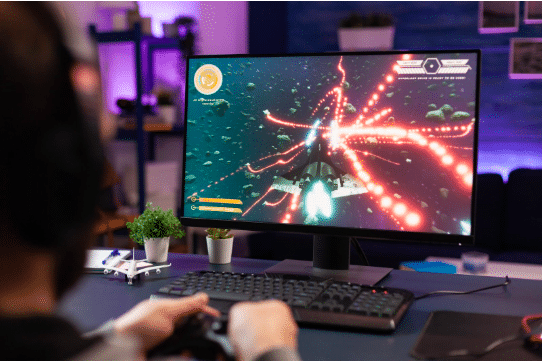Video games are often associated with negative effects such as addiction, lack of exercise and social isolation. But do they really deserve this bad reputation? Many educators are trying to show that video games (when used properly) can indeed be a helpful educational tool. For example, they can arouse students' interest in relevant topics and contribute to meaningful and effective learning.
Video games are one of the most popular forms of entertainment among young people. Just like traditional games, video games teach rules and content. They train decision-making, promote spatial-temporal thinking and psychomotor skills, with the difference that they are very captivating due to the sophisticated technology of action, sounds, colors and images.
"Electronic games seduce players of different ages through their interactivity, immersion and operativity. They allow the user to be protagonist-author of the process," says Lynn Alves, doctor of education and communication and coordinator of the Center for Virtual Communities at the University of the Brazilian State of Bahia. Engagement, creativity, interactivity, challenges and rewards are some of the benefits of video games. What makes games exciting is the freedom of design, the challenge, the possibility to try, fail and try again countless times.
Video games are a great form of entertainment and challenge. Until now, they have also only ever been perceived as such. It wasn't long ago that the use of video games as a teaching tool was unimaginable. However, with the new generation, a fully digital generation, schools and teachers need to look for new ways to capture the attention of young people. And why not video games? Gamification of educational processes has already proven effective and is capable of doing just that, making lessons more dynamic and interactive - for both students and teachers.
In addition to their entertainment and educational function, they are also a form of artistic and technical expression. The development of a video game requires more skills, time and dedication than some people can imagine. It takes a very dedicated and talented person or a small team to develop a good game. Many video games are even developed by teams of more than 100 people who work for years on a single project and often have more money to spend than Hollywood movies.
In many ways, the process of developing a game is similar to that of a film. It starts with an idea, which must be turned into a script with a story, which is then turned into concept drawings, from which the first artistic aspects of the game emerge, such as the color palette, the drawing style, the characters and the scenery.
After this first step, the game is transferred to the computer and becomes 2D or 3D art, depending on the visual style. Creating digital art can be very tiring and complicated. Depending on the complexity of the project, 3D figures can take up to a month to complete.
While the artistic part is being developed, the programmers are hard at work on the foundations of the game, where art and technology come together to create the eighth work of art. After months of creative back and forth, bug fixes (lots of bug fixes), music and sound effects, special effects (explosions and lots of magic), lighting, a dash of post-production, and lots of sweat and tears, the result is usually something unique. A new story in which the player is the protagonist.
Who hasn't lost themselves in a book? Who hasn't put themselves in the shoes of the protagonist while watching a movie? displaced? With games, you can experience what you could only imagine before. What started with 8-bit has been multiplied and is now used in many fields, such as the medical industry, where doctors train their skills in video games, or to help people with mental disabilities. They are equally used in architecture, fashion, automotive and education.
Video games are just another tool in an ever-evolving world, and just like any other tool at our disposal, it's up to us to use them wisely. The limits are the stars and our imagination.
Autor: Bruno Pellegrino





